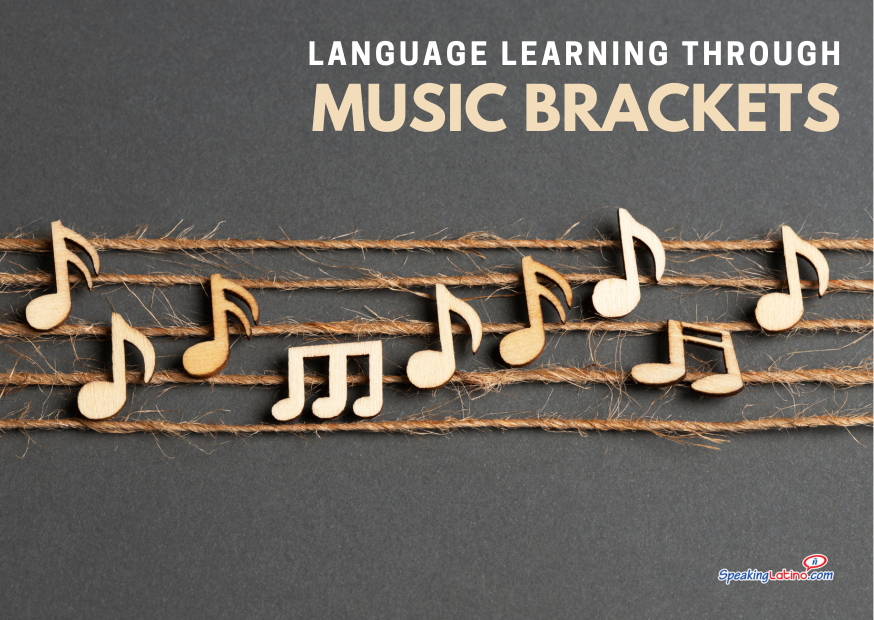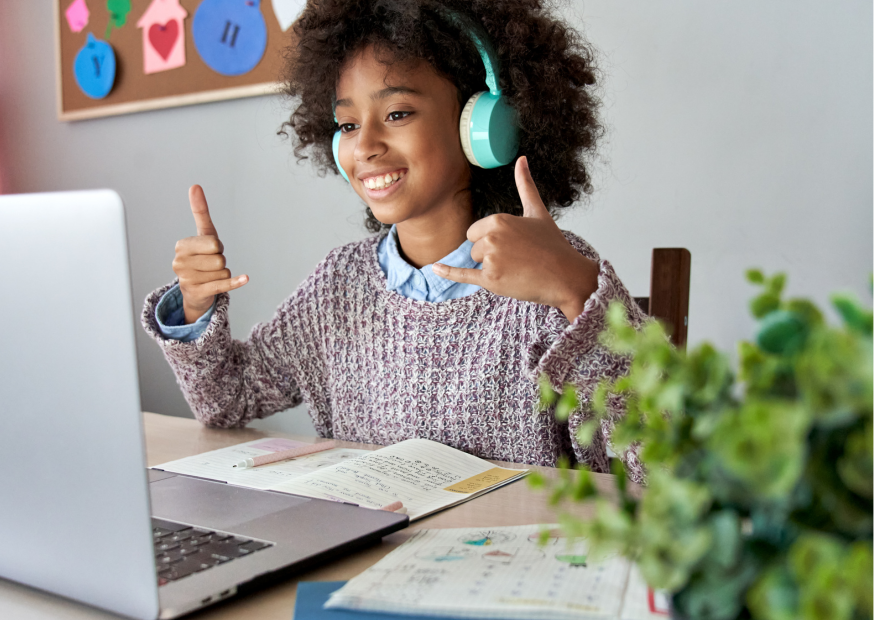
The content of this article is based on the presentation, Music Brackets by Allison Wienhold, which was part of the World Language Teacher Summit.
The Impact of Music Brackets on Language Education
Embracing cultural diversity while simultaneously developing language skills is a continuous challenge in educational paradigms. Music, an integral aspect of cultural expression, provides a potent medium for such endeavors. The innovative use of music brackets delivers an interactive, immersive experience that promotes linguistic proficiency and a comprehensive understanding of the rich tapestry of Spanish-speaking societies.
Let's explore the versatile approach of music brackets in language classrooms, underscoring their efficacy in fostering engagement, enhancing cultural appreciation, and strengthening language competencies.
What are Music Brackets
Music brackets are educationally structured, tournament-style events, rooted in the experience of enjoying and evaluating authentic Spanish songs within a classroom setting.
The conceptual framework is straightforward: students listen to pairs of songs daily and cast votes for their preferred tunes. This competitive edge, akin to sports brackets, renders what could be a passive learning activity into a dynamic, interactive experience, fostering a heightened sense of involvement and enjoyment among students.
Adapting the Music Bracket Model for Diverse Classrooms
Tailoring to Student Demographics
The intersection of teaching methodologies and student audience demands a pedagogical approach that respects varying backgrounds, learning preferences, and sensitivities.
Music brackets can be customized to align with these concerns, enabling teachers to adjust song selections and associated activities for age appropriateness and to reflect the cultural milieu of the classroom. Furthermore, these adjustments ensure adherence to educational standards and community values.
Maximizing Flexibility and Engagement
Flexibility is the cornerstone of music brackets, ensuring their seamless integration into any classroom or schedule. Teachers have the liberty to shorten or extend the duration of music bracket activities, depending on curricular demands and time constraints.
With self-paced bracket options, students are given autonomy over their learning pace, leading to a more personalized and immersive educational experience.
Building Classroom Community Through Music
Music brackets offer more than an exercise in language learning—they are a catalyst for building community within a class and across a school. As students make their musical preferences heard, they acquire a stake in the collective outcome. Shared voting creates a collaborative atmosphere, while digital bracket tracking simplifies the process, ensuring that everyone stays on the same page.
Promoting Ownership and Camaraderie
Empowering students to take control over aspects of their education yields increased commitment and enthusiasm. Music brackets foster this sense of ownership, as each vote contributes to the overall direction of the classroom's musical journey. This collective decision-making process encourages teamwork and builds camaraderie, extending the benefits of music brackets well beyond language acquisition.
Differentiating Instruction Through Music Analysis for Diverse Learning Styles
Language learning is not a monolithic process. The application of music brackets addresses diverse learning styles through a range of accompanying instructional materials.
From discussing thematic content in songs to analyzing linguistic structures and vocabulary, music brackets engage different cognitive skills. This level of differentiation ensures that students with varied learning preferences can equally benefit from and contribute to the learning environment.
Deep Dive into Cultural Representation
As students participate in music brackets, they are not merely passive consumers of content; they become active participants in a cultural discourse. By examining the music videos and lyrics, learners delve into a deeper understanding of the cultures producing these songs. Discussions on representation and perspective in the videos open avenues for critical thinking about societal issues, historical contexts, and the globalized interplay of cultures.

Music Brackets foster a heightened sense of involvement and enjoyment among students
Expanding Beyond Music: Cross-Curricular Applications
The use of brackets need not be confined to music alone. This format can be equally engaging when applied to various cultural artifacts, such as commercials, books, poetry, and cuisine. These cross-curricular applications invite students to exercise their Spanish language skills in different contexts, promoting the practical usage of language and expanding cultural literacy across multiple domains.
FAQs About Music Brackets
What are the benefits of using music brackets in the language classroom to enhance cultural understanding?
Using music brackets in the language classroom can offer several benefits in enhancing cultural understanding:
- Exposure to Diversity: Music brackets expose students to a variety of songs from different Spanish-speaking countries, allowing them to experience the diversity of cultures and musical styles present in the Spanish-speaking world.
- Cultural Context: Through the songs included in the bracket, students can learn about the cultural context, traditions, and history of the countries where the music originates. This helps students develop a deeper understanding of the cultural significance of the music they are listening to.
- Language Immersion: Music brackets provide an immersive language experience as students listen to songs in Spanish, helping them improve their listening skills and vocabulary in a fun and engaging way.
- Critical Thinking: Analyzing the songs, artists, and music videos included in the bracket can encourage students to think critically about the representation of different cultures and perspectives in the media they consume.
- Student Engagement: Music brackets can increase student engagement and participation in the classroom, as students are often excited to listen to and discuss the songs, vote on their favorites, and engage in activities related to the music.
By incorporating music brackets into the language curriculum, teachers can create a dynamic and culturally rich learning environment that not only enhances language skills but also fosters a deeper appreciation and understanding of the diverse Spanish-speaking world.
How can music brackets help students improve their language skills, such as listening comprehension and vocabulary?
Music brackets can be a valuable tool for helping students improve their language skills, including listening comprehension and vocabulary, in the following ways:
- Listening Practice: By listening to a variety of songs in Spanish included in the music bracket, students have the opportunity to practice their listening skills in a fun and engaging way.
- Exposure to Authentic Language: Music exposes students to authentic language use, including pronunciation, intonation, and colloquial expressions, helping them become more familiar with the nuances of the Spanish language.
- Contextual Understanding: Through listening to songs in the bracket, students can improve their ability to understand language in context, as lyrics often convey emotions, stories, and cultural references that aid in comprehension.
- Vocabulary Expansion: Songs introduce students to a wide range of vocabulary, idiomatic expressions, and cultural references that may not be encountered in traditional classroom materials, thereby expanding their vocabulary repertoire.
- Repetition and Reinforcement: Listening to songs multiple times during the bracket allows for repetition, which is essential for language learning. Repetition helps reinforce vocabulary and grammatical structures in students' minds.
- Engagement and Motivation: The engaging nature of music brackets can motivate students to actively listen, analyze lyrics, and participate in discussions, leading to increased retention of vocabulary and improved listening skills.
By incorporating music brackets into the language classroom, teachers can provide students with a dynamic and effective way to practice and enhance their language skills while enjoying the cultural richness of Spanish-language music.

Music Brackets are catalyst for building community within a class and across a school
What strategies can teachers use to facilitate meaningful discussions about the songs included in the music bracket?
Facilitating meaningful discussions about the songs included in a music bracket can enrich students' understanding of the music, language, and culture. Here are some strategies that teachers can use to promote engaging and insightful discussions:
- Guided Questions: Prepare a set of open-ended questions related to the lyrics, themes, and cultural aspects of the songs to guide the discussion. Encourage students to share their interpretations and opinions.
- Small Group Discussions: Divide students into small groups to discuss the songs and then come together as a class to share their group's insights. This allows for more in-depth conversations and diverse perspectives.
- Comparative Analysis: Encourage students to compare and contrast different songs in the bracket based on musical style, themes, or cultural influences. This can lead to discussions about diversity within the Spanish-speaking world.
- Critical Listening: Encourage students to listen actively to the songs and identify literary devices, cultural references, or emotional cues in the lyrics. This can deepen their understanding and appreciation of the music.
- Personal Connections: Prompt students to relate the songs to their own experiences, emotions, or cultural backgrounds. Encourage them to share how the music resonates with them personally.
- Role-Playing: Assign students different roles, such as music critics, cultural historians, or artists, and have them discuss the songs from these perspectives. This can add a creative element to the discussion.
- Reflection Journals: Ask students to keep reflection journals where they write about their thoughts, feelings, and insights after listening to each song. This can help them process their reactions and engage in deeper reflection.
- Guest Speakers or Performances: Invite guest speakers, musicians, or performers to share their expertise on the songs or musical genres included in the bracket. This can provide additional context and spark meaningful discussions.
By implementing these strategies, teachers can create a supportive and interactive environment for discussing the songs in the music bracket, fostering critical thinking, cultural awareness, and language development among students.
Music Brackets as Pathways to Global Citizenship
Incorporating music brackets in the language curriculum offers a confluence of entertainment, culture, and education. This approach fosters student engagement, celebrates diversity, and bolsters language competencies in a non-conventional yet highly effective manner. Whether over an extended period or condensed timelines, through in-class participation or self-paced learning, music brackets are adaptable teaching tools that resonate with students of all ages.
Beyond the immediate tangible benefits in linguistic and cultural fluency, music brackets impart lifelong skills in critical thinking, global awareness, and respect for diversity. They cultivate an environment where students can connect with the broader Spanish-speaking world, instilling a genuine interest and passion for its rich linguistic and cultural heritage.
In essence, music brackets do not just teach a language; they open doors to understanding and participating in a globally connected, culturally nuanced community, shaping students into informed global citizens.